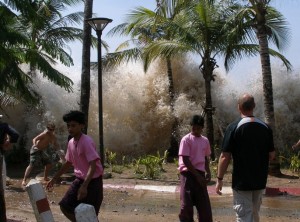SUNDAY, 23 JANUARY 2011
The German-Indonesian Tsunami Early-Warning System (GITEWS) for the Indian Ocean is complete and ready to use. This innovative approach combines seismometers, tide gauges, buoys and GPS measurements to detect and analyse earthquakes with fast, exact precision. A detailed simulation of the wave is then sent to 400 institutions including the police, emergency services and local media so appropriate warnings can be distributed to the public. The Federal Government of Germany backed the development of a warning system by the Helmholtz Centre Postdam-GFZ German Research Centre of Geosciences at the cost of 45 million Euros.Unfortunately the limitations of the system have already been highlighted by the quake in Mentawai Indonesia on 25th October last year. The warning system only takes 5 minutes to detect a quake and trigger an alert in the affected areas but the first waves of this tsunami landed on the coast of the Pagai Islands after 4 minutes, 46 seconds, costing the lives of 500 people. The warning system showed perfect precision but will always be too slow for quakes so close to the shoreline.
Despite this, the GITEWS has detected and issued warnings successfully for four tsunamis since September 2007. With the correct education for the Indonesian people on how to respond to such warnings, hopefully many lives in the future will be saved.
Written by Jessica Robinson

